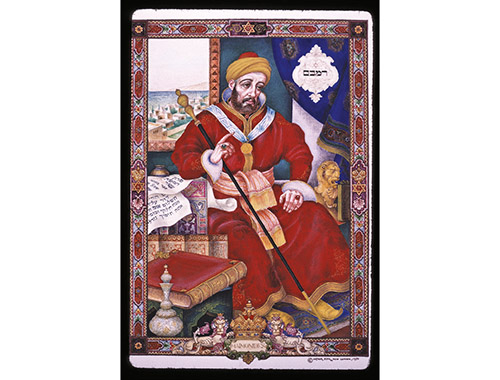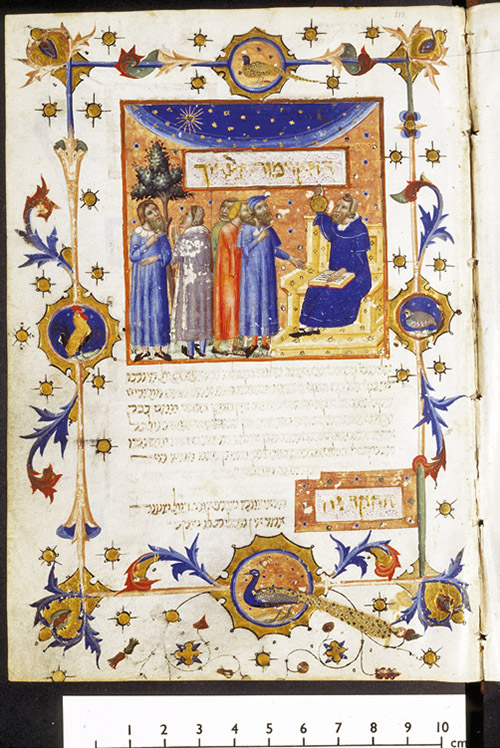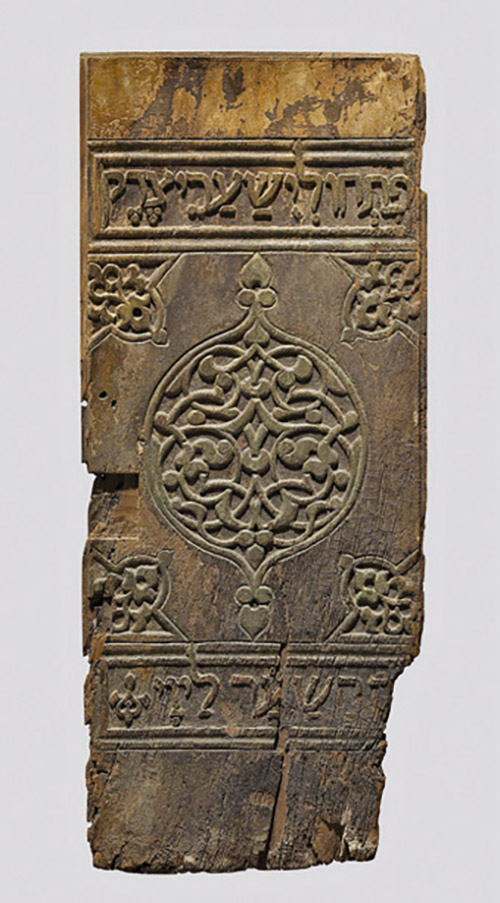
(Courtesy of YU) A ground-breaking exhibit of extraordinary items, some never before displayed in public, including spectacular manuscripts in Maimonides’s own hand, make up “The Golden Path: Maimonides Across Eight Centuries,” a new Yeshiva University Museum (YUM) exhibit, running May 9 to Dec. 31.
Artifacts with a personal connection to this great Jewish luminary include a Mishneh Torah (code of law that revolutionized the study and practice of Judaism) signed and personally approved by Maimonides; a fragment from the Cairo Genizah with Maimonides’s signature and other fragments in his hand; and a volume of his commentary on the Mishnah, containing notes written by Maimonides and a well-known sketch of the Temple menorah, which may have been drawn by the sage and has in recent decades become the model for menorahs used in public Chanukah celebrations across the world.
“This exhibit reflects Maimonides’s influence as well as his core values which also form the worldview and aspirations of Yeshiva University,” said Rabbi Dr. Ari Berman, president of Yeshiva University. “The basis for our educational enterprise is epitomized by Maimonides’s religious leadership and intellectual quest for truth. Yeshiva University is honored to introduce the journey of Maimonides’s works to the broader community who through this exhibit can better develop their knowledge of Maimonides, Jewish history and the values on which to build their lives.”

Also on display will be the first major public viewing of the exquisite, illuminated manuscript of Moreh Nevukhim (Guide to the Perplexed), completed in 1349 and in private hands for 500 years until it was acquired by the Italian government. Art historian Evelyn M. Cohen described the manuscript as “a masterpiece of medieval book art” and “a tour de force of calligraphic sophistication.”
Beyond written work, visitors will see a beautifully carved 11th-century door to the Torah Ark from Cairo’s Ben Ezra Synagogue, which Maimonides himself used when he lived in that city.
“There is not a single aspect of Jewish life and thought that is not shaped by Maimonides,” said Dr. Ronnie Perelis, the Chief Rabbi Dr. Isaac Abraham and Jelena (Rachel) Alcalay associate professor of Sephardic Studies at YU. “This exhibition’s strength is in its ability to bring to life the way Maimonides’s ideas illuminated Jewish life throughout the diaspora and for generations after his death.”
An unprecedented partnership with international collections, the exhibit is the most impressive collection of Maimonides artifacts ever to be displayed together, and the first to focus as much on the man himself as on his impact and influence.

Curated by Dr. David Sclar, the exhibit is accompanied by a fully illustrated catalog co-published by Liverpool University Press. The book explores Maimonides’s authority and impact as well as the Mediterranean and Islamic contexts in which he lived, and includes essays by world-class scholars from institutions such as Princeton University, Bar-Ilan University, Ben Gurion University, the Hebrew University of Jerusalem, the University of Amsterdam, the University of Haifa, the University of Oxford and Yeshiva University.
“Arguably, no other individual has had a more pervasive or enduring effect on Jewish religious life over the last millennium than Maimonides,” said Sclar. “This exhibition is intended to convey not only his importance, but the ways in which people have shaped and been shaped by his impact.”
Among the pieces that will be on loan to YUM are important and rare examples—such as 13th-century Yemenite manuscripts, early printed books from Italy and the Ottoman Empire and texts produced by and for Christian audiences—from the Hartman Collection, the most significant private collection of Maimonides manuscripts and rare books; and spectacular manuscripts, some in Maimonides’s own hand, borrowed from the Bodleian Libraries in Oxford, the British Library, the National Library of Israel, the Jewish Theological Seminary, the Royal Library in Copenhagen, the Italian State Archives and others.
This exhibition is made possible through the generosity of Robert and Debra F. Hartman. The Leon Levy Foundation and a private family foundation both provided generous grants to support this project. Additional support was provided by the David Berg Foundation.
To attend the exhibit, go to the YU Museum at 15 West 16th Street located in the Center for Jewish History building. The exhibit is free and open to the public Sundays through Fridays.

To find out more about the exhibit and register to attend: https://www.yu.edu/golden-path










